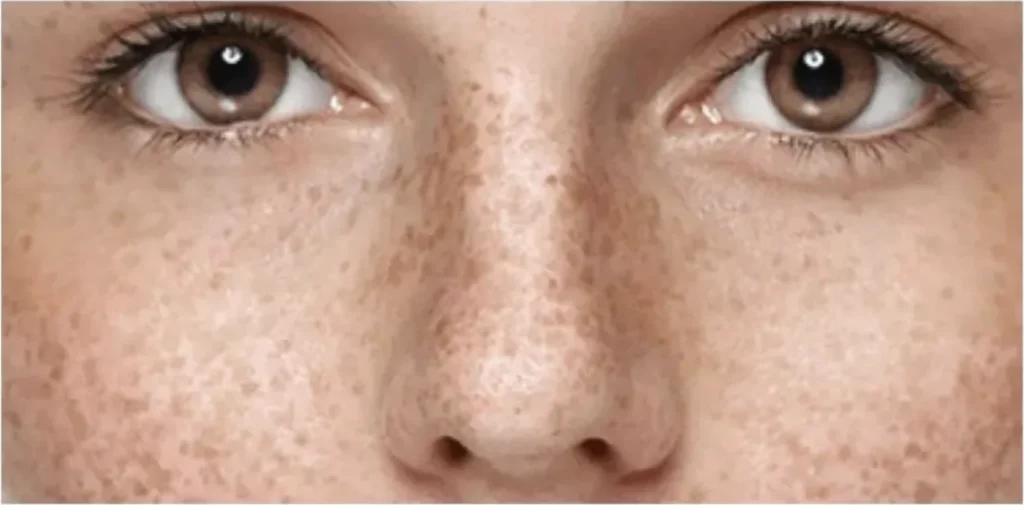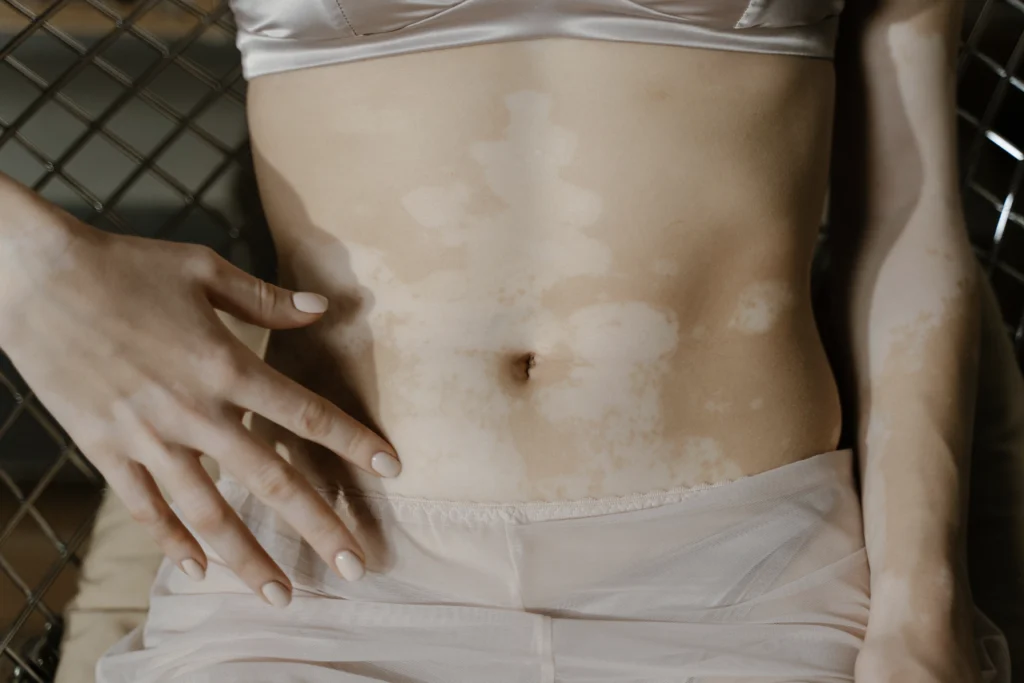Introduction
Are you tired of looking in the mirror and noticing uneven skin tones, spots, or patches that seem to disrupt the harmony of your complexion? Well, fret not! Hypo and hyper pigmentation are two common skin conditions that many individuals face, each with its own unique characteristics and causes. In this article, we will delve deep into the world of these skin colour variations, demystifying the science behind them, discussing treatment options, and providing practical tips to maintain healthy and radiant skin. So, whether you’re dealing with hypo and hyper pigmentation, or just curious to learn more, let’s embark on this informative journey together!
What Exactly Are Hypo and Hyper Pigmentation?
Before we jump into the nitty-gritty details, let’s get a grasp of what these fancy terms mean:
- Hypo Pigmentation: This term refers to areas of the skin that become lighter in colour compared to the surrounding skin. It occurs when the skin produces too little melanin, the pigment responsible for determining our skin colour. As a result, hypo pigmented areas can appear as white or significantly lighter than the rest of the skin.


- Hyper Pigmentation: On the flip side, hyper pigmentation is when certain areas of the skin become darker than the surrounding skin. It’s the result of an excess production of melanin in specific spots, leading to the appearance of dark patches, spots, or uneven skin tone.


What Causes Hypo and Hyper Pigmentation?
The causes of these skin colour variations are as diverse as the shades of human skin:
Hypo Pigmentation Causes:
- Post-Inflammatory Hypo Pigmentation: This occurs after skin injuries, such as burns, cuts, or infections, as the skin attempts to heal itself. In some cases, the melanocytes, the cells responsible for melanin production, may be damaged, leading to hypo pigmentation.
- Skin Disorders: Certain skin conditions, like vitiligo, can cause hypo pigmentation. In vitiligo, the immune system mistakenly attacks and destroys melanocytes, resulting in white patches on the skin.
- Genetic Factors: Some individuals may have a genetic predisposition to hypo pigmentation, making them more susceptible to developing lighter areas of skin.
Hyper Pigmentation Causes:
- Sun Exposure: Excessive exposure to the sun’s harmful UV rays can trigger an overproduction of melanin in an attempt to protect the skin. This often leads to the formation of sunspots, freckles, and uneven skin tone.
- Hormonal Changes: Hormonal fluctuations, such as those during pregnancy or while taking birth control pills, can contribute to the development of hyper pigmentation, commonly known as melasma or the “mask of pregnancy.”
- Acne and Inflammation: Acne breakouts and other forms of skin inflammation can stimulate melanin production, causing post-inflammatory hyper pigmentation. This often leaves behind dark spots long after the blemishes have healed.
- Aging: As we age, our skin’s natural repair processes can become less efficient. This can result in age spots or liver spots, which are a form of hyper pigmentation associated with aging.
Now that we’ve got the basics down, let’s dive deeper into the specifics of each condition.
Hypo Pigmentation: When Skin Loses Its Colour
Characteristics :
When hypo pigmentation strikes, it can manifest in various ways, depending on its cause:
- White Patches: These are the most common sign of hypo pigmentation, appearing as areas of skin that are noticeably lighter or even completely white.
- Size and Shape Variations: Patches can range from small spots to larger areas, and they may have irregular shapes.
- Affected Body Areas: It can occur anywhere on the body but is most noticeable in areas with darker skin tones.
Coping with Hypo Pigmentation
So, you’ve discovered hypo pigmented patches on your skin—now what? Here are some essential tips for coping with and managing it:
- Sun Protection: Hypo pigmented skin is more susceptible to sunburn and damage. Always use sunscreen with a high SPF to protect these areas when exposed to sunlight.
- Camouflage Makeup: Cosmetic solutions like makeup can help even out your skin tone and cover up hypo pigmented patches, boosting your confidence.
- Topical Steroids: In some cases, dermatologists may prescribe topical steroids to encourage melanin production in hypo pigmented areas.
- Micro-pigmentation: This is a specialised tattooing technique used to restore colour to hypo pigmented skin, often used for conditions like vitiligo.
- Consult a Dermatologist: If you’re concerned, it’s crucial to consult with a dermatologist for an accurate diagnosis and personalised treatment plan.


Hyper Pigmentation: Dealing with Dark Spots
Characteristics :
It characterised by the appearance of darker areas on the skin. Here’s what you need to know:
- Brown or Black Spots: Hyper pigmented areas typically appear as brown or black spots, ranging in size from tiny freckles to larger patches.
- Common Locations: These dark spots can appear on the face, hands, arms, and other areas exposed to the sun.
- Texture: In most cases, hyper pigmented areas have the same texture as the surrounding skin, making them flush with the skin’s surface.
Managing Hyper Pigmentation
Don’t let those dark spots get you down! There are effective ways to manage and reduce hyper pigmentation:
- Sunscreen is Your Best Friend: To prevent further darkening of hyper pigmented areas, apply sunscreen daily, even on cloudy days.
- Topical Treatments: Over-the-counter products containing ingredients like retinoids, alpha hydroxy acids (AHAs), or vitamin C can help fade it.
- Prescription Medications: For more stubborn cases, dermatologists may prescribe stronger topical treatments or oral medications.
- Chemical Peels: A chemical peel can remove the top layer of skin, reducing the appearance of hyper pigmentation. This should only be done by a trained professional.
- Laser Therapy: Laser treatments can target and break down the excess melanin in hyper pigmented areas, resulting in a more even skin tone.
- Skin Brightening Serums: Look for serums containing ingredients like kojic acid, arbutin, or licorice extract, known for their skin-brightening properties.


Conclusion
In the realm of skin health, hypo and hyper pigmentation are two conditions that can impact individuals of all backgrounds and skin types. While they may not pose serious health risks, their effects on self-esteem and confidence can be significant. Understanding the causes and characteristics of these conditions is the first step toward effective management and treatment.
Whether you’re dealing with hypo, hyper, or a combination of both, remember that there are options available to help you achieve a more even and radiant complexion. From sunscreen and topical treatments to advanced dermatological procedures, the path to healthier, more balanced skin is within reach.
So, the next time you catch a glimpse of your reflection and notice those pesky hypo pigmented or hyper pigmented areas, stand tall, smile, and know that you’re armed with the knowledge and tools to tackle them head-on. Your skin is as unique as you are, and it deserves to be celebrated and cared for, no matter the variations it presents. Embrace your skin journey, and let your inner confidence shine through!
https://www.youtube.com/channel/UCwivHo24VuhS0Lj54pzGScA
https://www.facebook.com/profile.php?id=100093483188011
FAQs About Hypo and Hyper Pigmentation
Can hypo or hyper pigmentation be prevented?
While you can’t always prevent these conditions, taking good care of your skin by using sunscreen, avoiding excessive sun exposure, and addressing skin injuries promptly can reduce your risk.
Are these conditions reversible?
The degree of reversibility depends on the cause and severity of the condition. Some cases of hypo and hyper pigmentation can be treated effectively, while
Are these conditions harmful to health?
Neither hypo nor hyper pigmentation pose a significant health risk. However, they can affect one’s self-esteem and confidence. It’s important to seek treatment if these conditions bother you.
Are there natural remedies for hypo and hyper pigmentation?
While natural remedies like aloe vera, honey, or lemon juice may help improve the appearance of these conditions, they are not a substitute for medical treatments. Always consult a dermatologist for proper guidance.
Can hypo and hyper pigmentation occur together?
Yes, in some cases, a person may experience both hypo pigmented and hyper pigmented areas on their skin, depending on the underlying causes.

